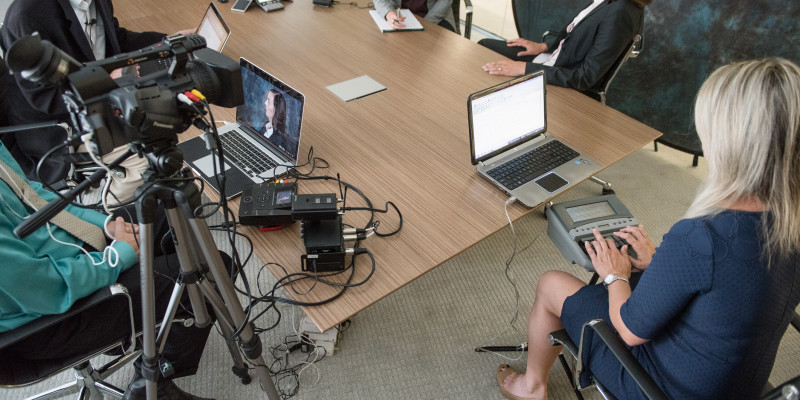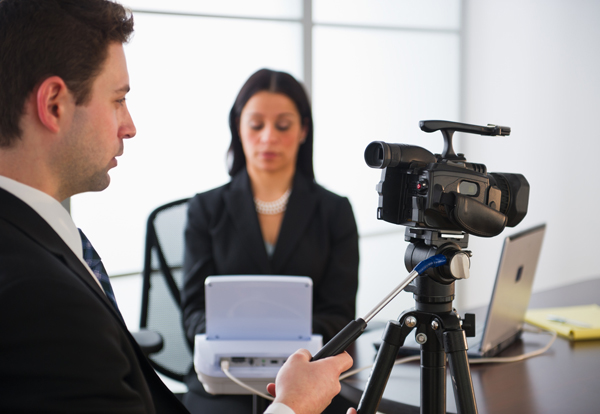How Legal Videography Boosts Courtroom Discussions and Evidence
How Legal Videography Boosts Courtroom Discussions and Evidence
Blog Article
Diving Into the Systems of Legal Videography: Introduction Its Procedure in Shielding Genuine Visual Testimony for Judicial Process
In the world of judicial process, the duty of lawful videography stands as a foundation in protecting and offering aesthetic evidence. As innovation remains to advancement, the mechanisms behind legal videography have come to be increasingly detailed, supplying a crucial layer of credibility to testimonies recorded on video. By delving right into the operational intricacies of lawful videography, one can reveal the thorough procedures that secure the stability of aesthetic evidence presented in court rooms - Legal Videography. This exploration not just drops light on the historical evolution of lawful videography however also means the future patterns that may better change exactly how visual testaments are maintained in the realm of justice.
Historical Development of Lawful Videography
Taking a look at the historical development of lawful videography reveals a considerable transformation in the recording and presentation of visual evidence within the lawful landscape. In the past, legal procedures greatly relied on composed pictures and records to document events and provide evidence. With the development of video clip modern technology, the legal market experienced a standard change in just how visual testimony was caught and provided.
The advancement of legal videography can be traced back to the late 20th century when improvements in video clip recording devices made it much more accessible for use in courtrooms. This technological improvement not just boosted the precision and integrity of aesthetic proof however likewise changed the way situations existed to discretionary (Legal Videography). Attorneys started to acknowledge the influential power of video clip recordings in conveying emotions, nuances, and non-verbal signs that written photos or transcripts alone might not record efficiently

Innovation Innovations in Video Clip Paperwork
What vital technical developments have changed video documents in the legal area? The legal area has seen considerable developments in video clip documentation modern technology that have boosted the authenticity and integrity of visual proof in judicial process.
In addition, improvements in video file encryption and watermarking technologies have actually boosted the protection and tamper-proof nature of video evidence, securing it versus unauthorized alterations or meddling. Additionally, the arrival of cloud storage options and remote access capacities has streamlined the storage, retrieval, and sharing of video clip evidence, assisting in smooth collaboration among legal professionals and guaranteeing effective accessibility to vital aesthetic statements when required. These technological improvements in video clip documentation have definitely changed the lawful area, enhancing the accuracy, trustworthiness, and admissibility of visual evidence in judicial procedures.
Duty of Lawful Videographers in Court Settings
The evolution of video documents modern technology in the legal area has necessitated an important role for lawful videographers in courtroom setups, making sure the integrity and reliability of aesthetic testaments provided during judicial procedures. Legal videographers play an essential function in capturing and maintaining precise visual proof that can be critical in lawsuit. Their responsibility extends to useful site establishing equipment, recording procedures, and producing top notch video clips that properly reflect the occasions in the court.
In courtroom setups, legal videographers should comply with stringent guidelines and requirements to maintain the authenticity of the aesthetic record. They need to possess a keen eye for information and a comprehensive understanding of lawful procedures to make sure that the footage they catch is a true depiction of the occasions that transpired. Furthermore, legal videographers usually work very closely with legal teams to make certain that the video clip proof aligns with the situation's needs and can be successfully presented in court to sustain the lawful arguments being made. In general, the duty of legal videographers in court setups is essential in maintaining the concepts of justice and guaranteeing the openness of lawful process.

Ensuring Admissibility and Stability of Video Clip Proof
To maintain the integrity of aesthetic evidence presented in lawful process, guaranteeing the admissibility and honesty of video proof is a critical obligation for legal videographers. Admissibility describes the acceptance of evidence by the court, and for video clip proof to be permissible, it should fulfill certain requirements. Legal videographers play a critical duty in ensuring that the videos they record abide by the rules of proof, such as authenticity, significance, and dependability.
Stability of video evidence includes preserving the creativity and accuracy of the video from the time it is recorded up until it is provided in court. This includes securely saving the video files, documenting the chain of custody, and avoiding any tampering or modifications. Legal videographers should stick to strict methods to guarantee the integrity of the video clip proof and avoid any difficulties to its authenticity.
Future Trends in Legal Videography
Given the increasing dependence on innovation in lawful process, lawful videographers are poised to welcome ingenious improvements forming the future of visual testimony capture and discussion. One of the prominent trends on the perspective is the combination of virtual fact (VIRTUAL REALITY) and enhanced reality (AR) technologies right into legal videography. These innovations have the possible to transform how aesthetic evidence exists in courtrooms, permitting courts and judges to immerse themselves in the scene of the criminal offense or occurrence.
Additionally, using expert system (AI) algorithms for video evaluation is expected to streamline the procedure of examining and assessing big quantities of video clip footage. AI can aid in recognizing vital minutes, abnormalities, and patterns within videos, enhancing the performance of legal examinations.

Final Thought
Finally, lawful videography has actually played an essential duty in giving genuine visual proof for judicial procedures. Through technological developments and the knowledge of legal videographers, the integrity and admissibility of video clip proof are made certain in court settings. Learn More Here As lawful videography continues to develop, it will certainly be important to promote requirements that keep the accuracy and dependability of aesthetic testimony for the future of legal proceedings.
Taking a look at the historic progression of legal videography exposes a significant transformation in the catching and discussion of visual proof within the legal landscape.The evolution of video documentation technology in the legal field has actually necessitated a crucial role for lawful videographers in court settings, ensuring the honesty and reliability of visual testaments provided during judicial process. Furthermore, lawful videographers often work carefully with lawful teams to make certain that the video evidence aligns with the situation's needs and can be properly presented in court to support the legal arguments being made.To preserve the trustworthiness of aesthetic evidence presented in lawful proceedings, making sure the admissibility and stability of video clip proof is an essential obligation for lawful videographers. As legal videography proceeds to evolve, it will be crucial to support standards that keep the precision and dependability of aesthetic testament for the future of legal proceedings.
Report this page